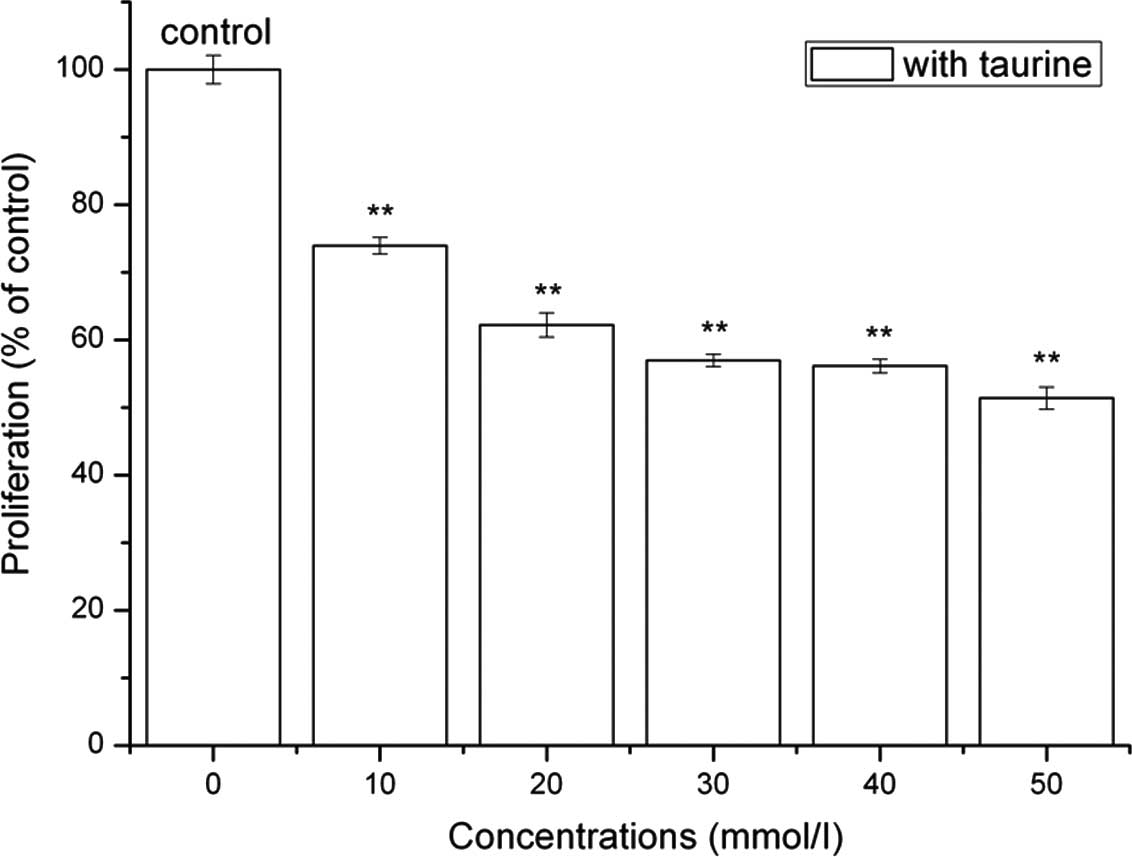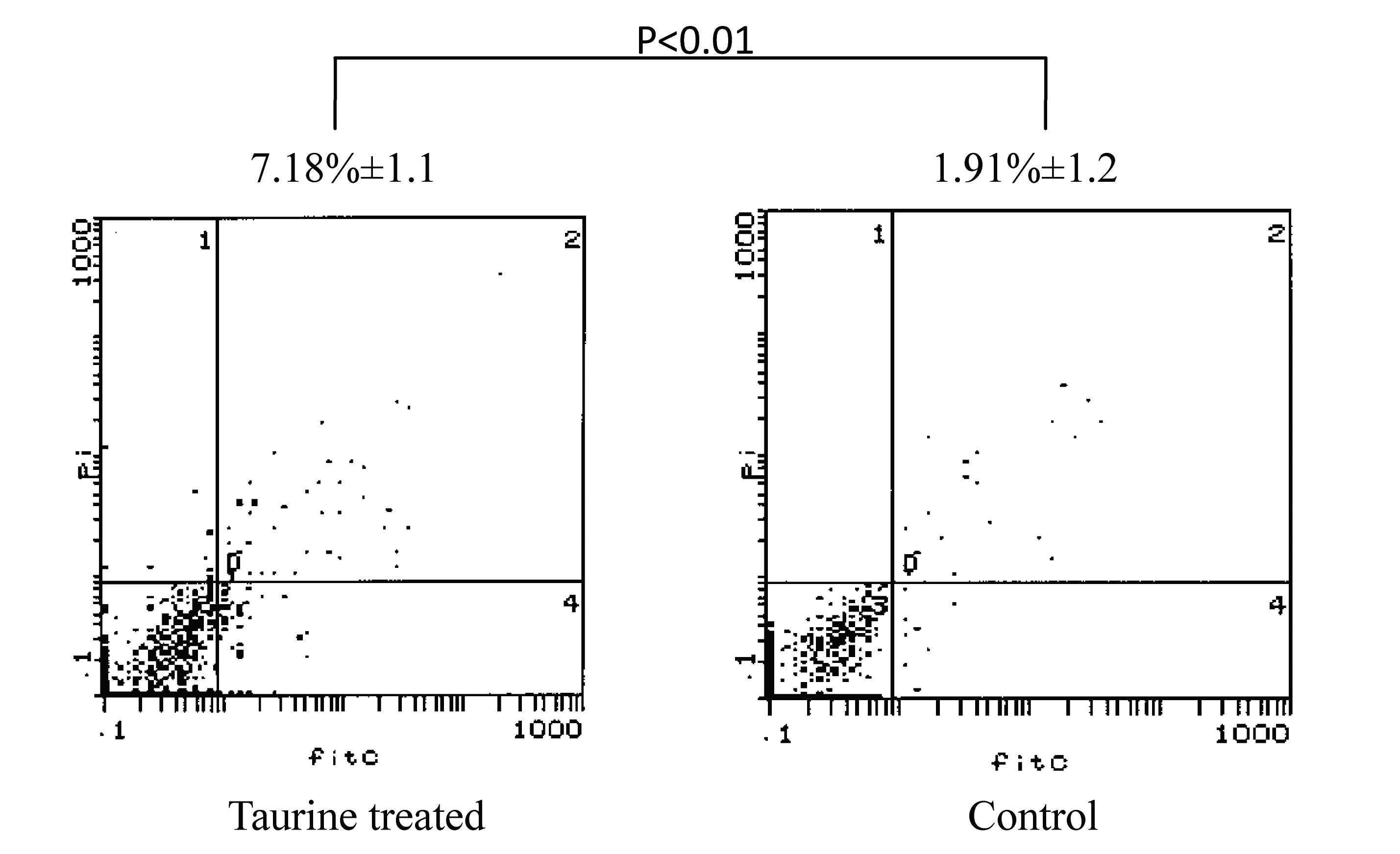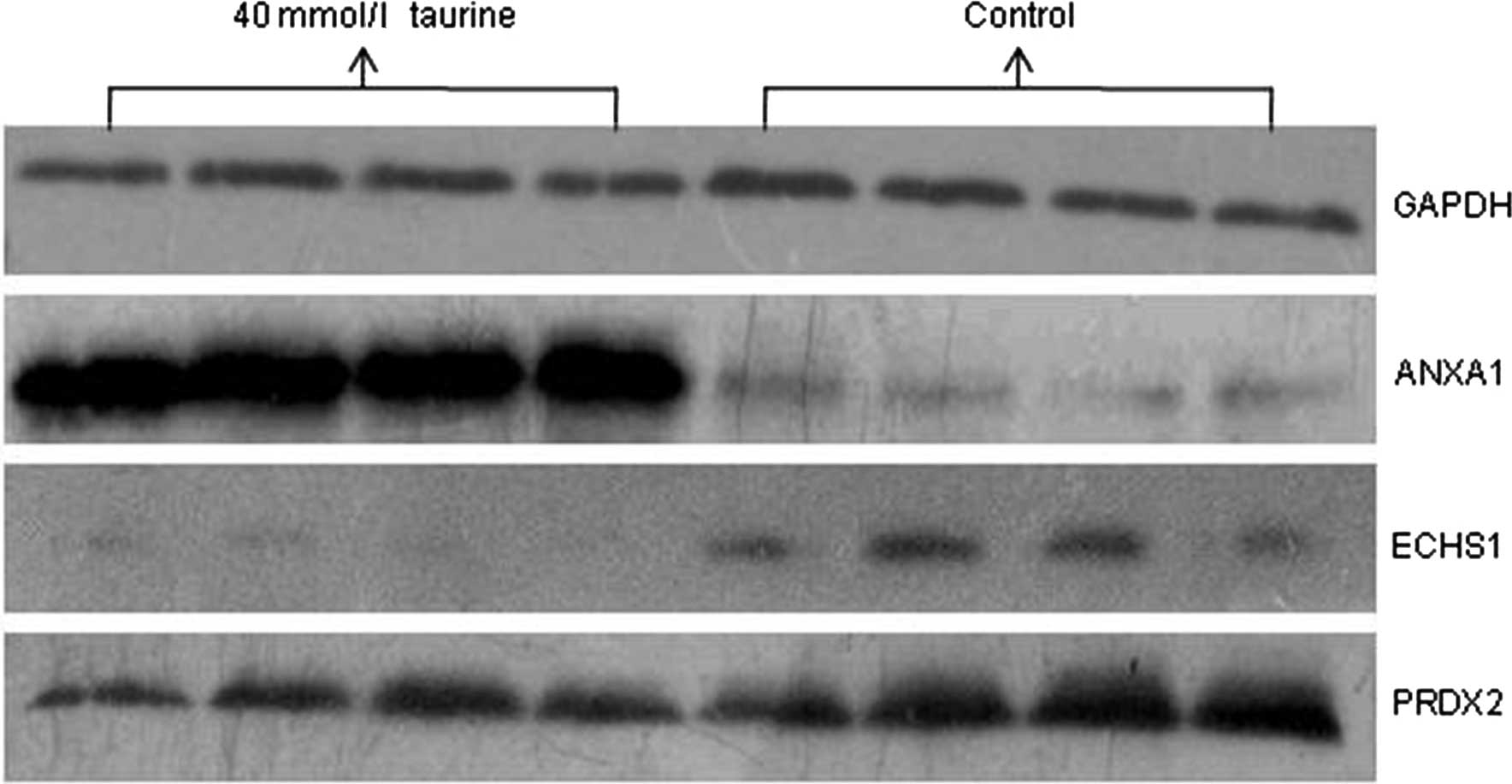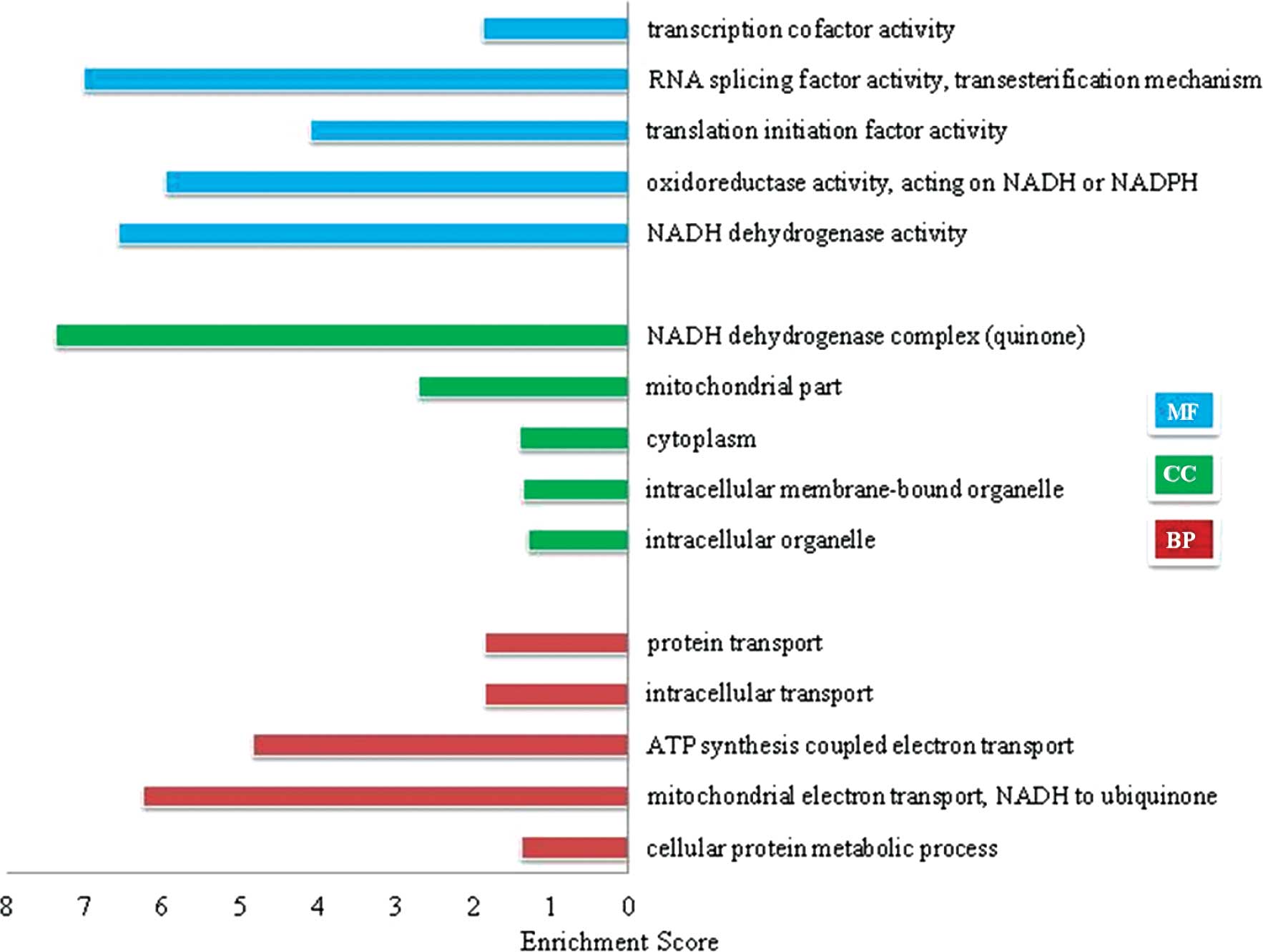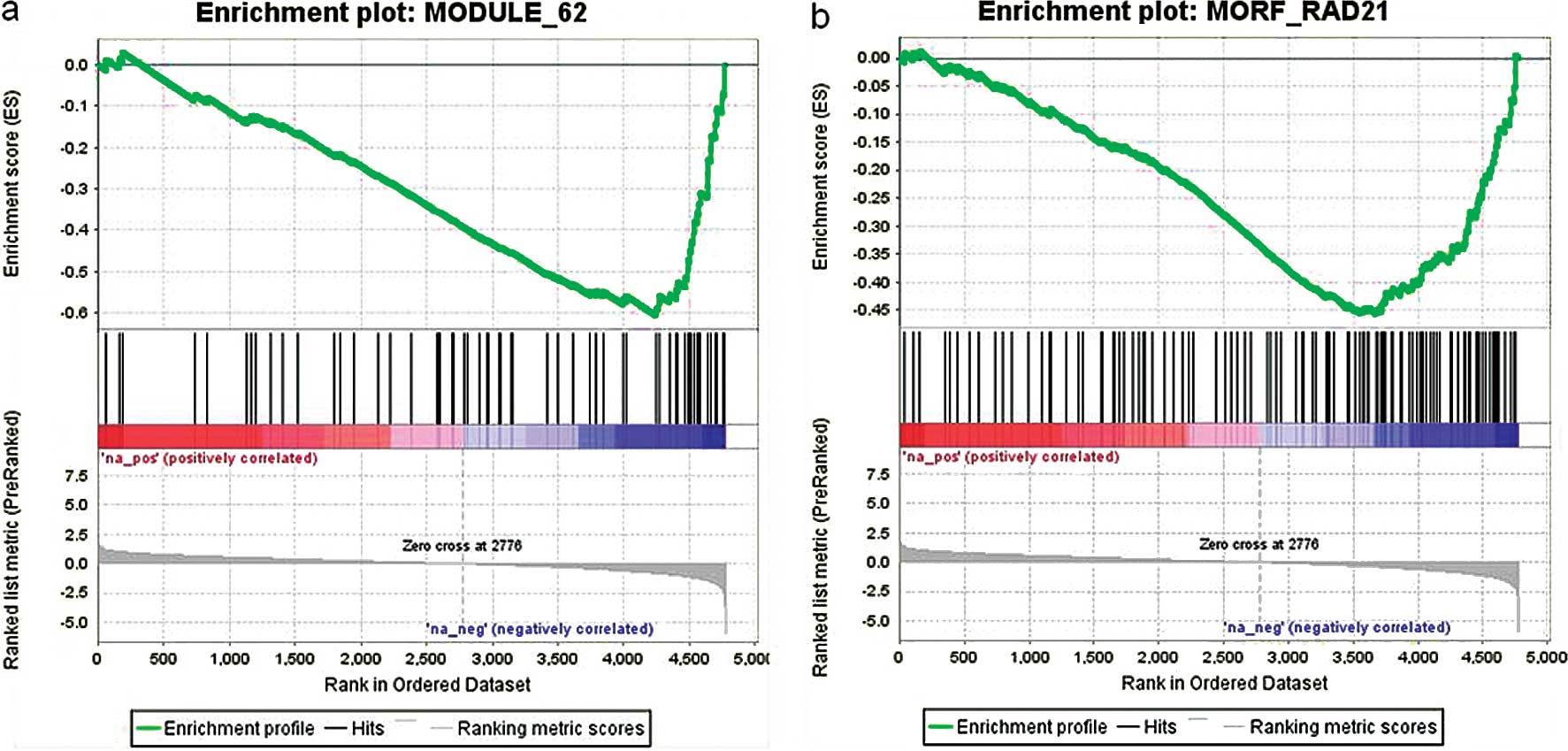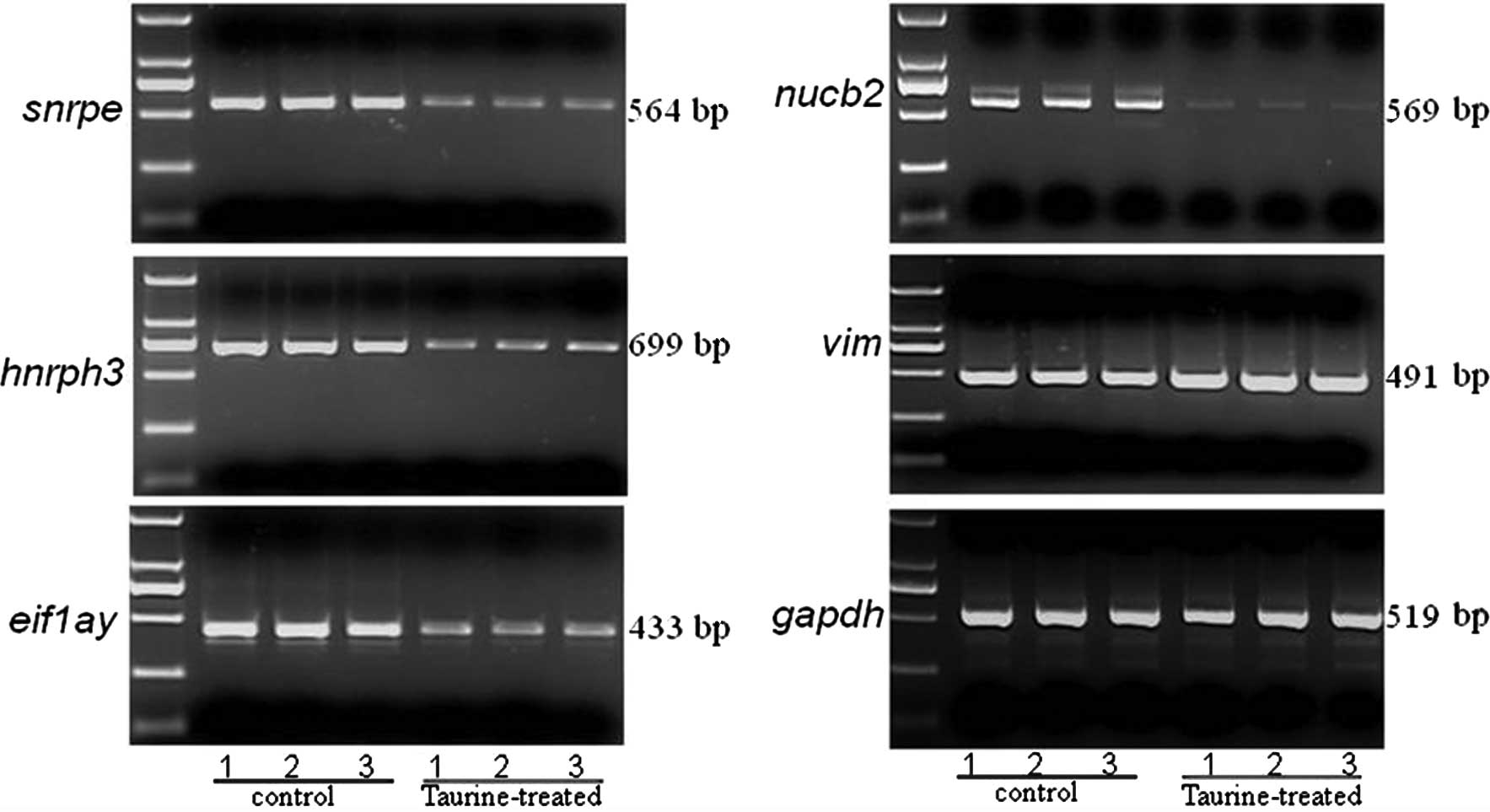|
1
|
Bataller R and Brenner DA: Liver fibrosis.
J Clin Invest. 115:209–218. 2005. View
Article : Google Scholar
|
|
2
|
Chen YX, Zhang XR, Xie WF and Li S:
Effects of taurine on proliferation and apoptosis of hepatic
stellate cells in vitro. Hepatobiliary Pancreat Dis Int. 3:106–109.
2004.PubMed/NCBI
|
|
3
|
Wu J and Zern MA: Hepatic stellate cells:
a target for the treatment of liver fibrosis. J Gastroenterol.
35:665–672. 2000. View Article : Google Scholar : PubMed/NCBI
|
|
4
|
Kerai MD, Waterfield CJ, Kenyon SH, Asker
DS and Timbrell JA: Taurine: protective properties against
ethanol-induced hepatic steatosis and lipid peroxidation during
chronic ethanol consumption in rats. Amino Acids. 15:53–76. 1998.
View Article : Google Scholar
|
|
5
|
Balkan J, Dogru-Abbasoglu S, Kanbagli O,
Cevikbas U, Aykac-Toker G and Uysal M: Taurine has a protective
effect against thioacetamide-induced liver cirrhosis by decreasing
oxidative stress. Hum Exp Toxicol. 20:251–254. 2001. View Article : Google Scholar : PubMed/NCBI
|
|
6
|
Refik Mas M, Comert B, Oncu K, Vural SA,
Akay C, Tasci I, Ozkomur E, Serdar M, Mas N, Alcigir G and Yener N:
The effect of taurine treatment on oxidative stress in experimental
liver fibrosis. Hepatol Res. 28:207–215. 2004.PubMed/NCBI
|
|
7
|
Ghandforoush-Sattari M and Mashayekhi S:
Evaluation of taurine as a biomarker of liver damage in paracetamol
poisoning. Eur J Pharmacol. 581:171–176. 2008. View Article : Google Scholar : PubMed/NCBI
|
|
8
|
Miyazaki T, Karube M, Matsuzaki Y, Ikegami
T, Doy M, Tanaka N and Bouscarel B: Taurine inhibits oxidative
damage and prevents fibrosis in carbon tetrachloride-induced
hepatic fibrosis. J Hepatol. 43:117–125. 2005. View Article : Google Scholar : PubMed/NCBI
|
|
9
|
Bradford MM: A rapid and sensitive method
for the quantitation of microgram quantities of protein utilizing
the principle of protein-dye binding. Anal Biochem. 72:248–254.
1976. View Article : Google Scholar : PubMed/NCBI
|
|
10
|
Stoscheck CM: Quantitation of protein.
Methods Enzymol. 182:50–68. 1990. View Article : Google Scholar
|
|
11
|
Ashburner M, Ball CA, Blake JA, et al:
Gene ontology: tool for the unification of biology. The Gene
Ontology Consortium. Nat Genet. 25:25–29. 2000. View Article : Google Scholar : PubMed/NCBI
|
|
12
|
Huang da W, Sherman BT and Lempicki RA:
Systematic and integrative analysis of large gene lists using DAVID
bioinformatics resources. Nat Protoc. 4:44–57. 2009.PubMed/NCBI
|
|
13
|
Kanehisa M, Araki M, Goto S, Hattori M,
Hirakawa M, Itoh M, Katayama T, Kawashima S, Okuda S, Tokimatsu T
and Yamanishi Y: KEGG for linking genomes to life and the
environment. Nucleic Acids Res. 36:D480–D484. 2008. View Article : Google Scholar : PubMed/NCBI
|
|
14
|
Patterson TA, Lobenhofer EK,
Fulmer-Smentek SB, et al: Performance comparison of one-color and
two-color platforms within the MicroArray Quality Control (MAQC)
project. Nat Biotechnol. 24:1140–1150. 2006. View Article : Google Scholar : PubMed/NCBI
|
|
15
|
Yang YH, Dudoit S, Luu P, Lin DM, Peng V,
Ngai J and Speed TP: Normalization for cDNA microarray data: a
robust composite method addressing single and multiple slide
systematic variation. Nucleic Acids Res. 30:e152002. View Article : Google Scholar : PubMed/NCBI
|
|
16
|
Subramanian A, Tamayo P, Mootha VK, et al:
Gene set enrichment analysis: a knowledge-based approach for
interpreting genome-wide expression profiles. Proc Natl Acad Sci
USA. 102:15545–15550. 2005. View Article : Google Scholar : PubMed/NCBI
|
|
17
|
Apweiler R, Bairoch A, Wu CH, et al:
UniProt: the Universal Protein knowledgebase. Nucleic Acids Res.
32:D115–D119. 2004. View Article : Google Scholar : PubMed/NCBI
|
|
18
|
Huang da W, Sherman BT, Tan Q, Collins JR,
Alvord WG, Roayaei J, Stephens R, Baseler MW, Lane HC and Lempicki
RA: The DAVID Gene Functional Classification Tool: a novel
biological module-centric algorithm to functionally analyze large
gene lists. Genome Biol. 8:R1832007.PubMed/NCBI
|
|
19
|
Kendler BS: Taurine: an overview of its
role in preventive medicine. Prev Med. 18:79–100. 1989. View Article : Google Scholar : PubMed/NCBI
|
|
20
|
Lourenço R and Camilo ME: Taurine: a
conditionally essential amino acid in humans? An overview in health
and disease. Nutr Hosp. 17:262–270. 2002.PubMed/NCBI
|
|
21
|
Chen YX: Protective action of taurine on
ischemia-reperfusion liver injury in rats and its mechanism.
Zhonghua Yi Xue Za Zhi. 73:276–279. 318–379. 1993.(In Chinese).
|
|
22
|
Friedman SL: Seminars in medicine of the
Beth Israel Hospital, Boston. The cellular basis of hepatic
fibrosis Mechanisms and treatment strategies. N Engl J Med.
328:1828–1835. 1993. View Article : Google Scholar
|
|
23
|
Cotran RS, Kumar V and Collins T: Robbins
Pathologic Basis of Disease. 6th edition. WB Saunders Co;
Philadelphia: 1998
|
|
24
|
Mattson MP and Chan SL: Calcium
orchestrates apoptosis. Nat Cell Biol. 5:1041–1043. 2003.
View Article : Google Scholar : PubMed/NCBI
|
|
25
|
Simon HU, Haj-Yehia A and Levi-Schaffer F:
Role of reactive oxygen species (ROS) in apoptosis induction.
Apoptosis. 5:415–418. 2000. View Article : Google Scholar : PubMed/NCBI
|
|
26
|
Green DR and Reed JC: Mitochondria and
apoptosis. Science. 281:1309–1312. 1998. View Article : Google Scholar : PubMed/NCBI
|
|
27
|
Camilleri-Broët S, Vanderwerff H, Caldwell
E and Hockenbery D: Distinct alterations in mitochondrial mass and
function characterize different models of apoptosis. Exp Cell Res.
239:277–292. 1998.PubMed/NCBI
|
|
28
|
Shibanuma M, Mashimo J, Kuroki T and Nose
K: Characterization of the TGF beta 1-inducible hic-5 gene that
encodes a putative novel zinc finger protein and its possible
involvement in cellular senescence. J Biol Chem. 269:26767–26774.
1994.PubMed/NCBI
|
|
29
|
Wells RG: The role of matrix stiffness in
hepatic stellate cell activation and liver fibrosis. J Clin
Gastroenterol. 39:S158–S161. 2005. View Article : Google Scholar : PubMed/NCBI
|
|
30
|
Ying W: NAD+/NADH and
NADP+/NADPH in cellular functions and cell death:
regulation and biological consequences. Antioxid Redox Signal.
10:179–206. 2008.
|
|
31
|
Zou CG, Gao SY, Zhao YS, Li SD, Cao XZ,
Zhang Y and Zhang KQ: Homocysteine enhances cell proliferation in
hepatic myofibroblastic stellate cells. J Mol Med (Berl). 87:75–84.
2009. View Article : Google Scholar : PubMed/NCBI
|
|
32
|
Liang J, Deng X, Yang GY, Huang RB and
Pang YS: Effect of natural taurine on serology and histology of
hepatic fibrosis in rat. Journal of Guangxi Traditional Chinese
Medical University. 9:3–5. 2006.(In Chinese).
|



